Long Non-coding RNA MIR4435-2HG Promotes Colorectal Cancer Proliferation and Metastasis Through miR-206/YAP1 Axis
- PMID: 32154166
- PMCID: PMC7044350
- DOI: 10.3389/fonc.2020.00160
Long Non-coding RNA MIR4435-2HG Promotes Colorectal Cancer Proliferation and Metastasis Through miR-206/YAP1 Axis
Abstract
Objective: Long non-coding RNAs (lncRNAs) are critical to colorectal cancer (CRC) progression. In the current study, the objective was the exploration of the role played by lncRNA MIR4435-2HG in CRC proliferation and metastasis. Methods: lncRNA MIR4435-2HG expression and its association with CRC were analyzed using database and clinical specimens. The influences exerted by MIR4435-2HG on cell proliferating process, invading process, and migrating process of CRC were identified after MIR4435-2HG knockdown. The influences exerted by MIR4435-2HG on tumor growth and metastasis were assessed in vivo. The underlying mechanistic associations between MIR4435-2HG, microRNA miR-206, and the transcription factor Yes-associated protein 1 (YAP1) were assessed using bioinformatics and a luciferase reporter gene assay. Results: MIR4435-2HG was highly expressed in CRC tissue in contrast with that in regular tissues and displayed relations to poor prognosis. MIR4435-2HG knockdown could suppress CRC cell proliferation, invasion, and migration. Moreover, MIR4435-2HG knockdown inhibited CRC growth and liver metastasis in vitro. We found MIR4435-2HG knockdown reduced YAP1, CTGF, AREG, vimentin, Snail, Slug, and Twist expression but enhanced E-cadherin expression. Functionally, MIR4435-2HG acted as a competing endogenous RNA (ceRNA) to upregulate YAP1 by sponging miR-206. Conclusions: MIR4435-2HG promoted CRC growth and metastasis through miR-206/YAP1 axis and is likely to play prognostic marker roles and be therapeutically targeted in CRC.
Keywords: MIR4435-2HG; YAP1; colorectal cancer; long non-coding RNA; metastasis; proliferation.
Copyright © 2020 Dong, Yang, Yang, Li and Qiu.
Figures

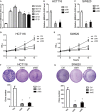
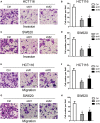
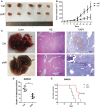

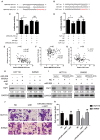
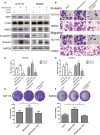
Similar articles
-
MIR4435-2HG, miR-125b-5p, and Sema4D axis affects the aggressiveness of colorectal cancer cells.Folia Histochem Cytobiol. 2022;60(2):191-202. doi: 10.5603/FHC.a2022.0018. Epub 2022 Jun 22. Folia Histochem Cytobiol. 2022. PMID: 35730423
-
Long non-coding RNA MIR4435-2HG recruits miR-802 from FLOT2 to promote melanoma progression.Eur Rev Med Pharmacol Sci. 2020 Mar;24(5):2616-2624. doi: 10.26355/eurrev_202003_20530. Eur Rev Med Pharmacol Sci. 2020. PMID: 32196611
-
Long noncoding RNA MIR4435-2HG promotes hepatocellular carcinoma proliferation and metastasis through the miR-22-3p/YWHAZ axis.Am J Transl Res. 2020 Oct 15;12(10):6381-6394. eCollection 2020. Am J Transl Res. 2020. PMID: 33194037 Free PMC article.
-
MIR4435-2HG: A newly proposed lncRNA in human cancer.Biomed Pharmacother. 2022 Jun;150:112971. doi: 10.1016/j.biopha.2022.112971. Epub 2022 Apr 18. Biomed Pharmacother. 2022. PMID: 35447550 Review.
-
MIR4435-2HG: A Tumor-associated Long Non-coding RNA.Curr Pharm Des. 2022;28(25):2043-2051. doi: 10.2174/1381612828666220607100228. Curr Pharm Des. 2022. PMID: 35674305 Review.
Cited by
-
Comprehensive analysis of ceRNA networks reveals prognostic lncRNAs related to immune infiltration in colorectal cancer.BMC Cancer. 2021 Mar 9;21(1):255. doi: 10.1186/s12885-021-07995-2. BMC Cancer. 2021. PMID: 33750326 Free PMC article.
-
High expression of LOC541471, GDAP1, SOD1, and STK25 is associated with poor overall survival of patients with acute myeloid leukemia.Cancer Med. 2023 Apr;12(7):9055-9067. doi: 10.1002/cam4.5644. Epub 2023 Jan 27. Cancer Med. 2023. PMID: 36708053 Free PMC article.
-
Long noncoding RNA RP11-757G1.5 sponges miR-139-5p and upregulates YAP1 thereby promoting the proliferation and liver, spleen metastasis of colorectal cancer.J Exp Clin Cancer Res. 2020 Oct 6;39(1):207. doi: 10.1186/s13046-020-01717-5. J Exp Clin Cancer Res. 2020. PMID: 33023613 Free PMC article.
-
MIR4435-2HG Is a Potential Pan-Cancer Biomarker for Diagnosis and Prognosis.Front Immunol. 2022 Jun 15;13:855078. doi: 10.3389/fimmu.2022.855078. eCollection 2022. Front Immunol. 2022. PMID: 35784328 Free PMC article. Review.
-
The role of XBP-1-mediated unfolded protein response in colorectal cancer progression-a regulatory mechanism associated with lncRNA-miRNA-mRNA network.Cancer Cell Int. 2021 Sep 14;21(1):488. doi: 10.1186/s12935-021-02167-5. Cancer Cell Int. 2021. PMID: 34521445 Free PMC article.
References
LinkOut - more resources
Full Text Sources
Research Materials
Miscellaneous

